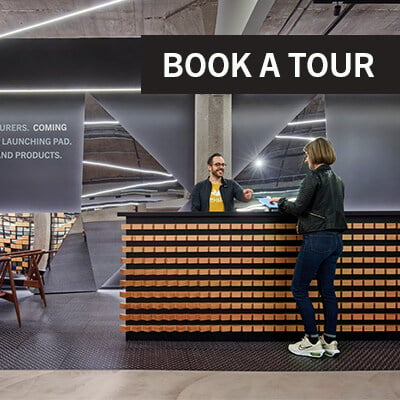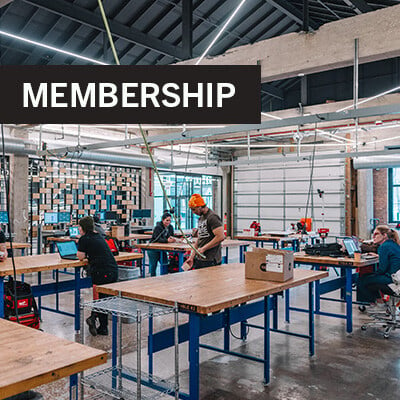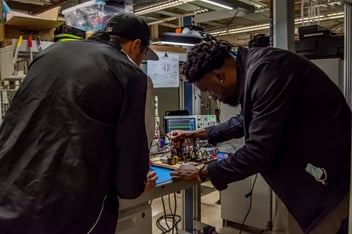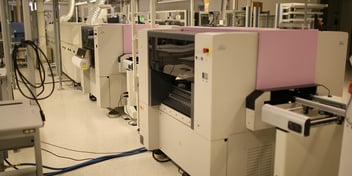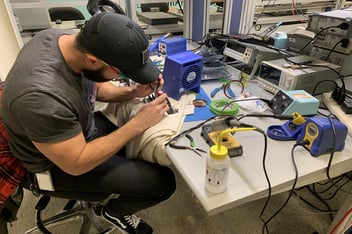What Should Your Minimum Viable Product (MVP) Look Like?
If you’re a technical founder or just have a physical product idea, chances are you have a product mindset. You’re obsessed with how brilliant your product features are. You’re buried by ideas about how to get things to work. You have visions of what the final product will look like. You might even be moving towards a minimum viable product (MVP) with this tunnel vision.
Cut! Let’s rewrite the script.
The minimum viable product (MVP) is not the holy grail. It’s not something you should be chasing or building towards. Build it now: the simplest version of your product that you can present. You’ll use it to target your very first set of users to test and validate the market.
This article will present three minimum viable product examples:
- The mock user interface
- Modifying a competitor product
- Market testing messaging
If you’re looking for more information on how to actually deploy and test a minimum viable product to a target market, read mHUB's article on market testing.
Breaking the Product Mindset
Think about your company as a business not a product. The product developer must understand the end user’s problem. You don’t want an MVP that is overengineered on the product side and under engineered on the customer side. You don’t need to build “the good box” with all the final bells and whistles. Build the essentials and use the MVP to make sure you’re on the right path.
Reid Hoffman, founder of LinkedIn, has said, “If you are not embarrassed by the first version of your product, you've launched too late.” You shouldn’t be on your 9th prototype before you’ve talked to a customer. Start thinking about the MVP as a process not a thing: it’s getting people to use the product to test the idea.
How to Present a Physical MVP to Customers: Three Minimum Viable Product Examples
It’s easy to see how software companies can iterate often and launch quickly. It can be more difficult to get a customer to engage with a physical product in a meaningful way before features are clearly defined. Creativity and simplicity are key.
Here are some minimum viable product examples that can be built early and presented to customers to secure the critical customer feedback you need to fully develop a product:
Create a mock user interface
To validate the bare essentials of what your product or service needs to be, you can use a look-a-like prototype. Present an MVP that “looks like this” to give a feel of what the product could look like while also working as a prototype. It doesn’t need to have full functionality. It can start by just showing how something could work.
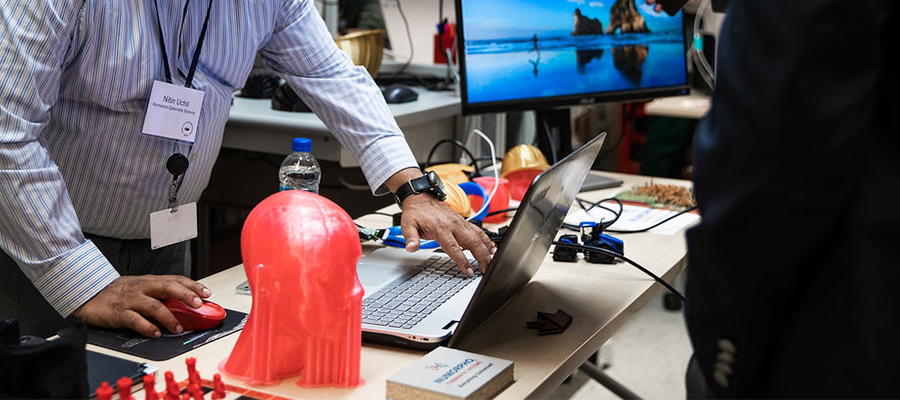
For example, when Google wanted to get people interacting with augmented reality / virtual reality, they released Google Cardboard and asked people to assemble the cutout and insert their phone. Simple, right?
Tools you might use:
- A quick mobile app can be created using Blynk.io or Figma to prototype a user interface to monitor and control your prototype. With this prototype you can gather feedback from key stakeholders and potential customers to see if the prototype needs further development and refinement.
- 3D prints or laser cut parts combined with hardware from Digikey or Mcmaster Carr are great for physical mocks ups
Modify a Competitor's Product
Another quick and low investment method to test a feature or a product is to use an existing solution. This could either be a modified competitor’s product or another product from a different industry that tests the solution you had in mind for your target market.
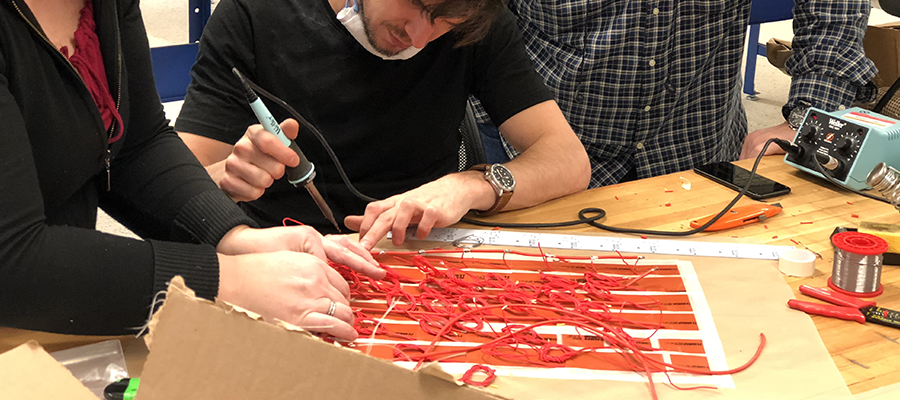
This product might need to be modified or positioned in a different manner such as advertised at a lower cost or in a different use case to meet the needs of your target customer. You can quickly get feedback and make observations of what features customers like or don’t or where they struggled and what could be improved.
For example, lets say your customer research has shown that there is a pain point with a particular kitchen appliance and your hypothesis is that it could be solved with a sensor and a new control algorithm. Instead of building the entire appliance from scratch, the quickest way to prototype and test your theory is to modify an existing appliance and add your own sensors and control logic to the device.
Examples could include integrating a thermal sensor into a microwave to stop cooking when the food reaches a specific temperature, or a blender that monitors the torque on the motor and automatically pulses at the right time to get consistent results, or a humidity sensor that monitors a rice cooker to prevent it from over cooking.
Tools you might use:
- Arduinos and ESP32’s are great micro controllers and can easily interface many sensors and supply control logic to a driver module that can actuate motors, heaters, pumps, or valves to change the state of your device.
Test Marketing Messages
One minimum viable product example might not even be a product at all. You could launch digital assets like a website and social channels to start promoting your product before it even exists.
If you’re doing B2C selling you might include spoofed reviews, beautiful product imagery, and a waitlist to get in line for the next best thing. This can be done in tandem with physical product testing as you’ll often be able to uncover a group of potential customers you can engage locally.
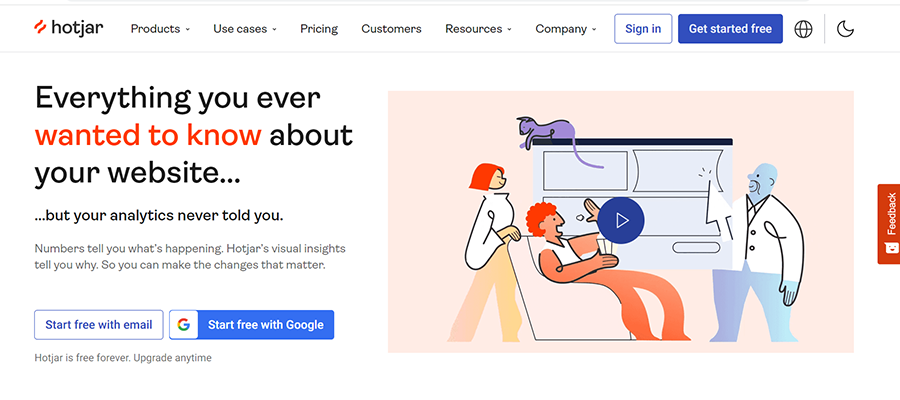
If you have a basic MVP but are doing more B2B selling, it can be difficult to find the initial customers who are willing to engage with the physical product. In this case, your digital environment should include things like case studies, white papers, and thought leadership content to express your expertise in the area. You would observe and measure engagement with that content. Better yet, us it with a CTA (call to action) to request a product demonstration.
Either way, both B2C and B2B sites can build a list of potential customers for both product testing as well as end-user sales before a product is even built.
Tools you might use:
- Unbounce.com is a great tool that you can use to quickly build a website to perform A/B testing on a B2C marketing messages. You could test out features of a product you haven’t even built yet to understand the demand and the willingness to pay. You could also test out different price points to discover if there is product market fit or get a sense of how many customers will want your product.
- Hotjar is an insight tool that can give you the data you need to see where stakeholders spend their time on the website and see what features they are most interested in.
All of these options allow you to get an MVP in the hands of potential customers to help determine if there is a need, interest, and intent to use your product. Sometimes the hardest part will be finding the dozen customers that would not only use the product but are willing to test it.
Using Customer Feedback to Iterate Your MVP
If you’re building a physical product or hardtech solution, you know the barriers to entry and cost of production are high. You might need a ‘friends and family’ round to get from an early MVP to a prototype that you can sell and get into the hands of paying customers (B2C) or one that you can use to secure proof of concept to investors and potential pilot partners (B2B).
These Minimum Viable Product examples can help you reduce risks early on and gather a lot of data to inform your journey and make the most of your design and development investment.
If things go well, and there are indications customers would be willing to pay for the solution, you can start building out features. These should be based on the customer touchpoints you can observe in this very early testing.
If you need access to equipment, engineers, or business strategists to help you understand the best path for your idea, mHUB has a prototyping lab with 360 degree resources to turn your idea into a reality. Learn more about how to join this network of hardtech entrepreneurs by becoming an mHUB member.
If you need more information on the prototyping phase and how to iterate in a smart, customer-centric manner, read: Rapid Prototyping: What to Expect during an Iterative Product Development Process

